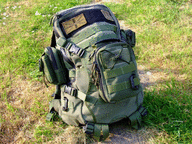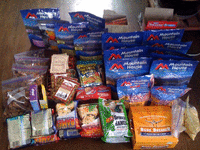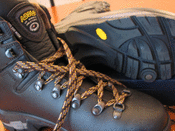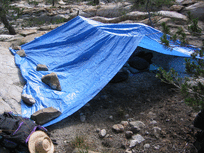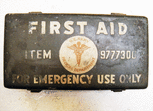Here’s an excerpt taken from “History, Manners and Customs of the Indian Nations”, written by John Gottlieb Ernestus Heckewelder, describing how the Lenni Lenape, or Delawares, prepared and used this emergency food:
Their Psindamooan or Tassmanane, as they call it, is the most nourishing- and durable food made out of the Indian corn. The blue sweetish kind is the grain which they prefer for that purpose. They parch it in clean hot ashes, until it bursts, it is then sifted and cleaned, and pounded in a mortar into a kind of flour, and when they wish to make it very good, they mix some sugar [i.e., maple sugar] with it. When wanted for use, they take about a tablespoonful of this flour in their mouths, then stooping to the river or brook, drink water to it. If, however, they have a cup or other small vessel at hand, they put the flour in it and mix it with water, in the proportion of one tablespoonful to a pint. At their camps they will put a small quantity in a kettle with water and let it boil down, and they will have a thick pottage.
With this food the traveler and warrior will set out on long journeys and expeditions, and as a little of it will serve them for a day, they have not a heavy load of provisions to carry. Persons who are unacquainted with this diet ought to be careful not to take too much at a time, and not to suffer themselves to be tempted too far by its flavor; more than one or two spoonfuls, at most, at any one time or at one meal is dangerous; for it is apt to swell in the stomach or bowels, as when heated over a fire.
Pinole is also the staple of the famous Tarahumara Indians (sometimes referred to as “the running people”), a Mexican tribe of super athletes who run 50 or 100 miles at a time for pure enjoyment, seemingly without effort. Their fuel for these runs? They take with them small sacks of Pinole.
How to Make Pinole
What You’ll Need
- frying pan (cast iron or non-stick preferred)
- dried corn on the cob: For this you just hang some corn in a dry place in your home until the kernals are dry throughout and come off the cob without much effort. For a less auhentic but still workable solution, you can also dehydrate frozen or canned corn in your dehydrator.
- blender, coffee grinder, or food processor: (or mortar and pestle if you want to really do it the authentic way)
How to Make Pinole
Step 1: Remove the dried corn kernals from the cobs (skip this step if you dehydrated frozen corn) | |
Step 2: Heat up a non-stick pan (or oiled pan if you don’t have one) to medium heat. | |
Step 3: Spread out the kernals on the hot pan so that none are on top of another. Heat until the majority swell up and turn round and light-brown. | |
Step 4: Remove from heat, place the parched corn in a blender, coffee grinder, or food processor and grind until finer than cornmeal (but not as fine as wheat flour) |
I’d like to add that you can also make Pinole by taking cornmeal and cooking it over a pan in the same manner as above (don’t expect it to swell however).
Pinole Recipes
One popular method of consuming Pinole is to mix it with water (1 T to 3 cups) to make an energy drink. I personally did not like this all too much since it doesn’t dissolve completely in the water and feels like I’m drinking a glass of sand and water. The taste was good but the consistency wasn’t to my liking (and I’m someone who doesn’t mind eating bugs…go figure )Instead, I preferred to take the tablespoon into my mouth and chug it down with water.Since the Pinole actually tastes pretty good by itself (I used the Tarahumara Pinole Recipe found below), I found this a lot more appetizing.
As a side note, I was quite surprised at how much it made me feel full. The Pinole must of swelled inside my stomach after a bit giving me that “full” feeling — and that was only two tablespoons of it. I can see how this would sustain you on long trips.
Here are some recipes found online:
Tarahumara Pinole Recipe
- 1/2 cup pinole, ground fine
- 1/2 tsp ground cinnamon
- 1 Tbsp brown sugar, honey, or agave nectar
- 1 Tbsp chia seeds (optional)
Runner’s Recipe
- 2 cups Pinole
- 1/3 cup honey
- 2 tbsp. hemp or chia seeds
- 1 tsp. salt
- 1 tbsp. cinnamon This can be quickly blended together in a hot pot or pan and cooled until dry.

